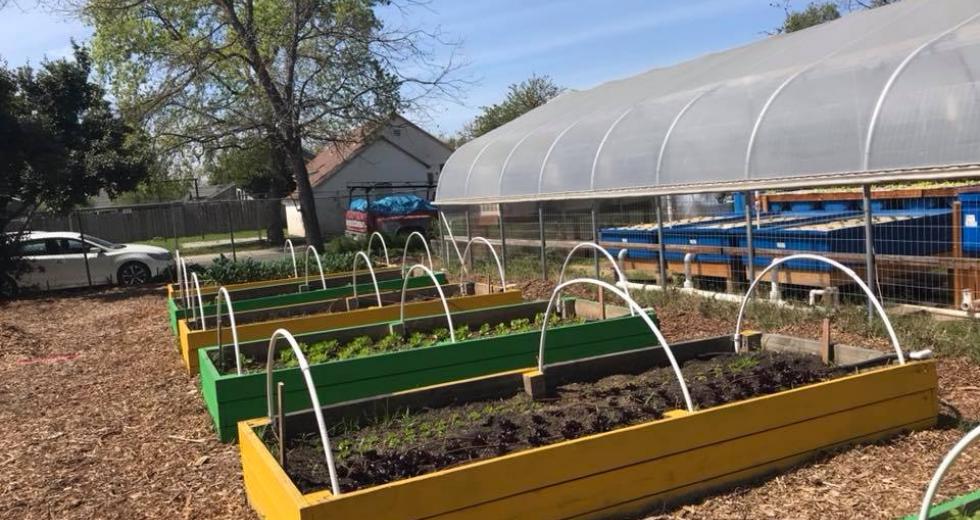Last November, I stood on the stage of the Meeting of the Minds Summit in Sacramento, sandwiched between a panel led by energetic Stockton Mayor Michael Tubbs and his vision for economic prosperity, and a talk on the future of autonomous delivery vehicles. My talk? To encourage city planners, developers and urban architects to bring agriculture back to cities and urban spaces, and what this addition can do for the future of their communities’ resiliency, job creation, healthy citizens and carbon footprint.
Stay with me here. I know, agriculture is not “the new wave.” It’s not even close. I mean, we’re talking something that started about 10,000 years ago when eight of the Neolithic founder crops, like emmer wheat, hulled barley, lentils and chickpeas, were first cultivated. Fast forward to the late 1800s in the Sacramento Valley, when Yolo County was the largest producer of wheat in the entire United States.
The new faces of farming — millennials, career changers, refugees — are all looking for opportunities, and many of them want to farm in urban places, next to their customers.
Things have changed quite a bit since then. In 1900, 60 percent of the U.S. population consisted of farmers — so around 45 million — and most, if not all, lived and farmed in rural areas. Today, only 1.8 percent of our population is a farmer, or about 6 million. Today, we don’t just have fewer farmers than we did then (for a much larger population), we also have an age issue. The average age of the American farmer is just under 60. The only occupation with an older average age is truck drivers. A more critical statistic is the age distribution. For every farmer under the age of 25, there are five over the age of 75.
While you might not feel this threat every day, it’s very real — it’s a threat to our food supply and health, and to the resilience of our communities and nation. As former Agriculture Secretary Tom Vilsack said, if left unchecked, this shortage of farmers and farmer succession could threaten our ability to produce the food we need.
What can you do about it? For one thing, recognize that your cities, towns and new developments not only have room for farming, but should welcome it with open arms. The new faces of farming — millennials, career changers, refugees — are all looking for opportunities, and many of them want to farm in urban places, next to their customers.
The City of West Sacramento did something about this need for new farmers. As city officials learned that the two largest obstacles to starting a farm are access to land and access to capital, they also realized they had one of these critical resources at their disposal — land. In 2014, my organization, the Center for Land-Based Learning, partnered with West Sacramento to begin the first urban farm on a site that was formerly a gas station and had sat an idle dumping ground for almost 20 years. Today that farm is flourishing — literally. A graduate of our California Farm Academy training program, Laurie Gates of Flourish Farm, is growing a half-acre of fresh flowers for u-picks, farmers markets and local farm stands.
Lake Washington Farm, a privately-owned site next to a fire station and across from Nugget Market, is another innovative West Sacramento example. Not only do the three farmers at this 3.5-acre site have an onsite farm stand, but they sell to Nugget and to local restaurants.
Just down the road from Lake Washington Farm sits the West Sacramento Housing Development Corporation farm site, formerly an under-utilized half-acre lawn in the middle of a low-income senior housing complex. Now it’s a thriving farm that provides acreage for three farmers who grow everything from fresh veggies sold to residents and neighbors, to the Sacramento area’s first Saffron crop. The farmers even take time to educate the students at the elementary school across the street.
These revitalized, formerly unused urban spaces are growing much-needed healthy food. All of these farms are in food deserts. Several of our farms grow food for school lunch programs in local districts. They completely change the look and feel of a neighborhood, inviting new development and businesses to connect and grow with them. These urban farms can be a critical carbon sink and have been prioritized in the newly released California 2020 Natural and Working Lands Climate Implementation Plan. They provide local markets and food access to people who haven’t had it in generations. Local businesses support these projects by bringing employees out for volunteer days and buying produce they then donate to food banks. These farms provide opportunities for people of all ages to learn about where their food comes from and how it’s grown.
So, what is holding you back from unleashing this economic and community building engine? Whether you’re a landowner, developer, city or regional planner, or elected official, I challenge you to do what you can to promote urban farming. You can tear down the fences surrounding vacant lots. Create citywide policies that encourage and even incentivize urban agriculture, and perhaps even more importantly, incentivize institutions like hospitals and schools to purchase locally grown food. Prioritize updating zoning policies that restrict or constrict urban farming. Seek out your local and regional beginning farmer training programs and ask them to join you. Stop saying, we can’t do that here, and instead take action to include urban agriculture in your city planning.




Comments
This is awesome!
Please add my name to your email list.
Hi
San Jose, CA has a UAIZ program that gives big property tax breaks to landowners of vacant lots who agree to keep the land in active agricultural use for 5 years. Which is fantastic! However, getting land owners to agree to this is proving difficult. I have been searching for land to farm flowers on and so far haven’t had any success. Do you have any tips for me?